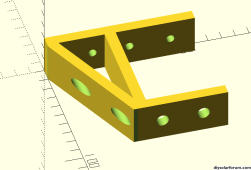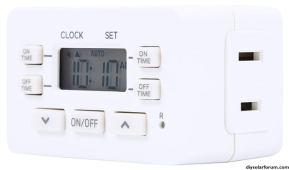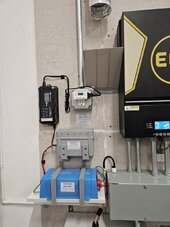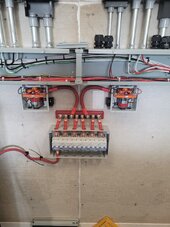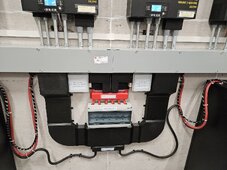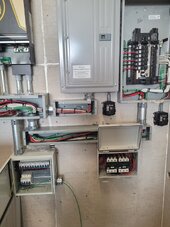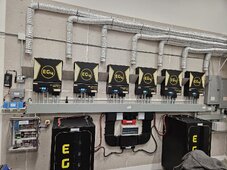fmeili1
Solar Enthusiast
I would like to share my experiences in finding the right black/dark start UPS for a solar system. It might be helpful for someone to avoid making the same mistakes as me.
First, you only need to take care about a dark-start situation if you have some sort of emergency shutdown relays or contactors or a PVRSS integrated in your solar system. These PVRSS, relays and contactors need an initial source of energy because they are designed as normally open (NO). So you need at least a bit of energy to startup your solar production. This comes usually from a tiny UPS which must not last very long, just long enough to activate the relays etc, to do the startup process until new solar/battery energy is available.
In my situation, I have relays between the batteries and AIO inverters, contactors between the grid and the AC-in's of my AIO's and a module based Tigo PVRSS. Everything is implemented just for an emergency situation to do a rapid shutdown of all external energy sources for the AIO's. I only need about a max. of 100W power from this UPS for usually less than a minute to drive the controller circuit with it's relays.
I've tested the following UPS's in the following order:
These are the parts:


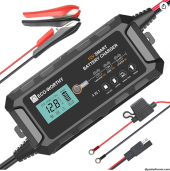
First, you only need to take care about a dark-start situation if you have some sort of emergency shutdown relays or contactors or a PVRSS integrated in your solar system. These PVRSS, relays and contactors need an initial source of energy because they are designed as normally open (NO). So you need at least a bit of energy to startup your solar production. This comes usually from a tiny UPS which must not last very long, just long enough to activate the relays etc, to do the startup process until new solar/battery energy is available.
In my situation, I have relays between the batteries and AIO inverters, contactors between the grid and the AC-in's of my AIO's and a module based Tigo PVRSS. Everything is implemented just for an emergency situation to do a rapid shutdown of all external energy sources for the AIO's. I only need about a max. of 100W power from this UPS for usually less than a minute to drive the controller circuit with it's relays.
I've tested the following UPS's in the following order:
- Using a very cheap "simulated" sine wave UPS (APC UPS BE425M - 425VA for about $65)
- Because of the "simulated" sine wave, the relays and contactors getting hot and making annoying humming noises - NOT usable!
- After that, I've tried a pure sine wave UPS with an acceptable price (CyberPower CP1000PFCLCD - 1000VA for about $170)
- Because this UPS is not a "double conversion" aka "online" UPS type, it has a transfer time in case of a power outage. Even this transfer time is short (between 10ms-50ms), it's too much and my relays/contactors are dropping for a short moment which shutdown the solar system again - NOT usable!
- After that, I've found only one small "double conversion" UPS (Eaton Tripp Lite SU700XLCD - 700VA for about $700)
- It costs a fortune but I need a reliable online, pure-sine UPS for my situation. Unfortunately, the unit was not working reliable in case of a power outage (DC BUS unbalanced faults). So I've returned it - broken and too expensive!
- After that, I've decided to build my own "mini - pure sine wave- double conversion - black-start - UPS". There are only 3 things required to do this. It has about 500VA power and the costs are about $280. The parts are the following:
- Victron Phoenix 12V / 500VA, 120V inverter ($160)
- A 8Ah AGM battery ($30)
- A quality 10A 12V battery tickle charger ($90)
These are the parts:



Last edited:




